Exhibition Intro ~ Map ~ Next section
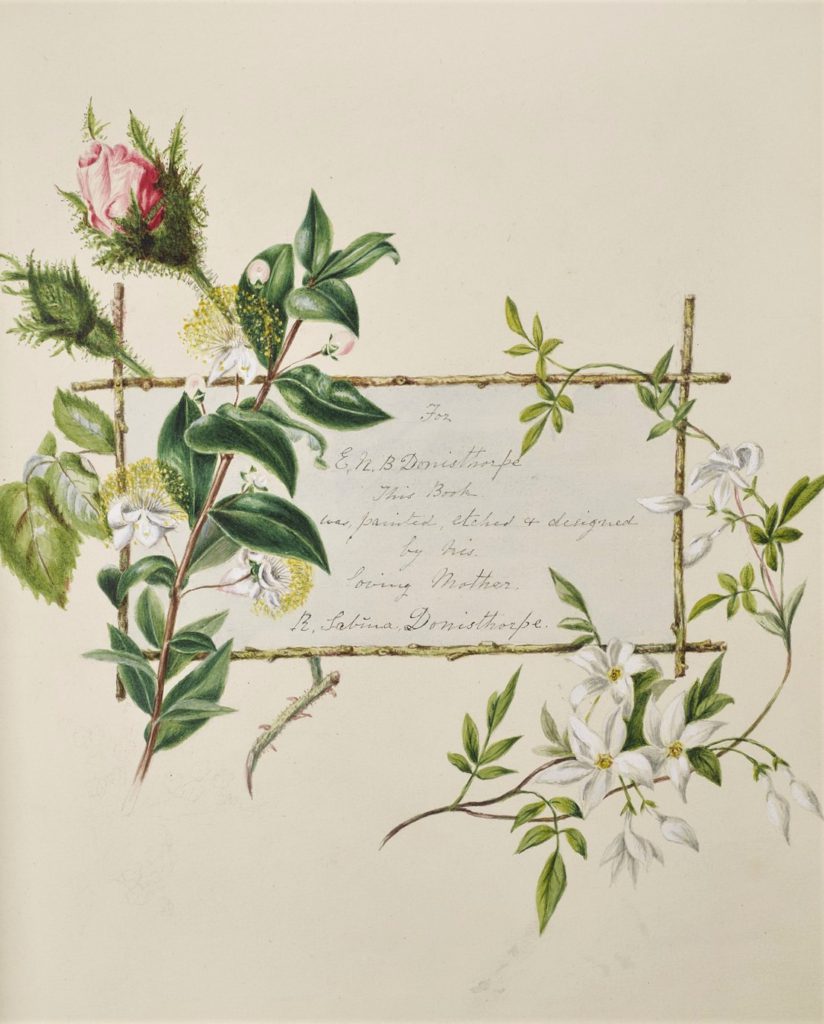
The Donisthorpe Album is part of the Baker collection of rare books held in the University of Sussex Special Collections at The Keep. Dating from the 1860s or 70s, it is the work of Sabina Donisthorpe who we learn from the dedication designed, painted and drew the book for her son. The album combines calligraphy, watercolour, printmaking and elements of the popular practice of scrapbooking. Her pen and ink drawings imitate wood engraved prints like the illustrations in the Dalziel Archive.
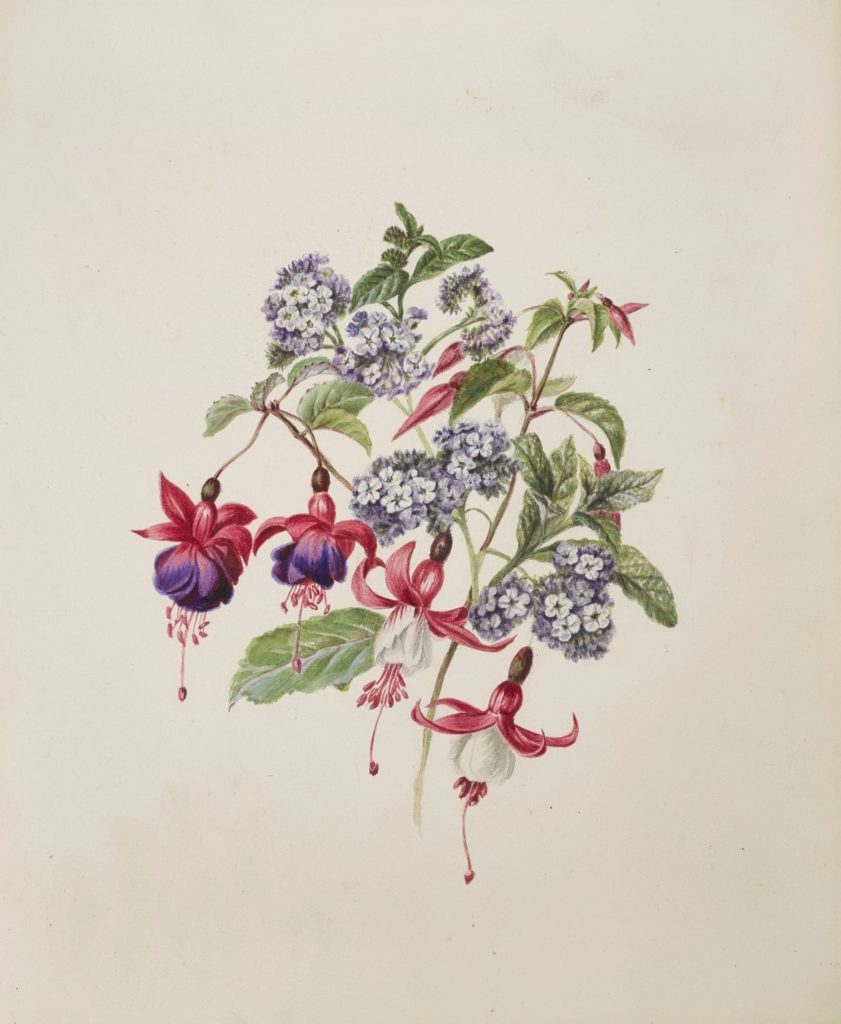
Sabina Donisthorpe made careful decisions about the balance of images, text and colour in her work and the possibilities of the page.
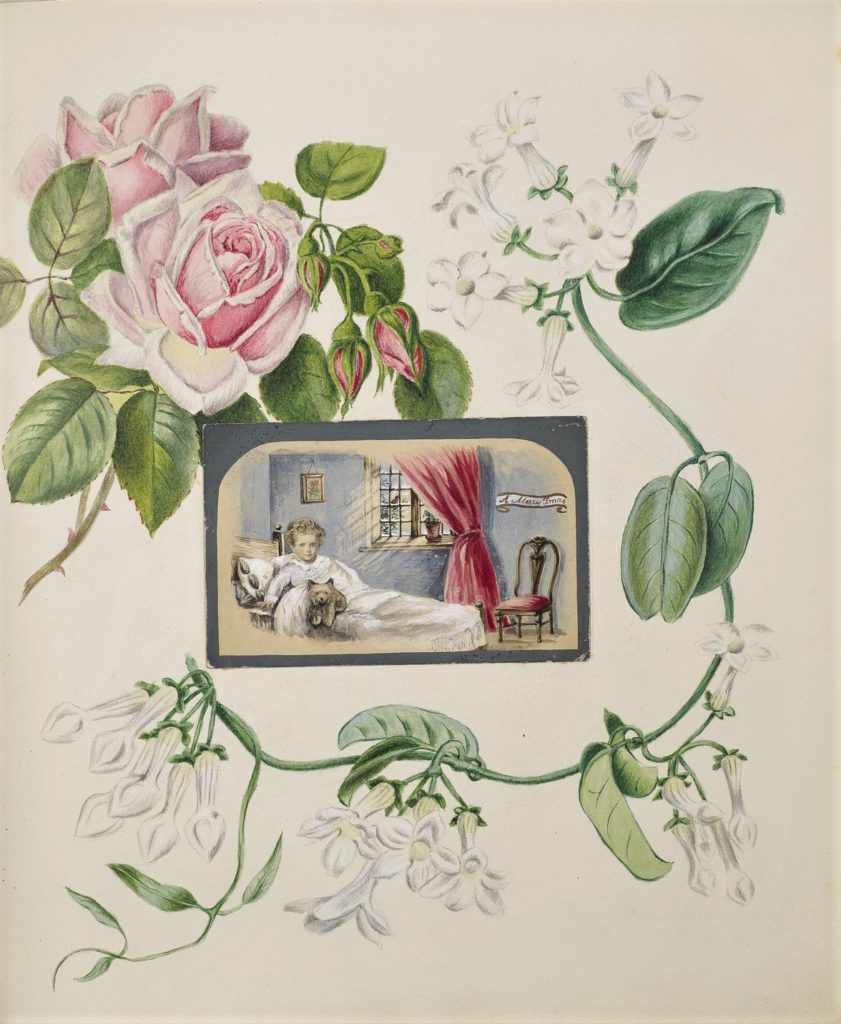
A student from BACA considers the effects of her visual choices below:
“I really like the plants and colours and how she’s painted the fabric and feathers on the birds even though the background is plain. I like how she’s added texture and made them look 3D with lighter and darker colours.”
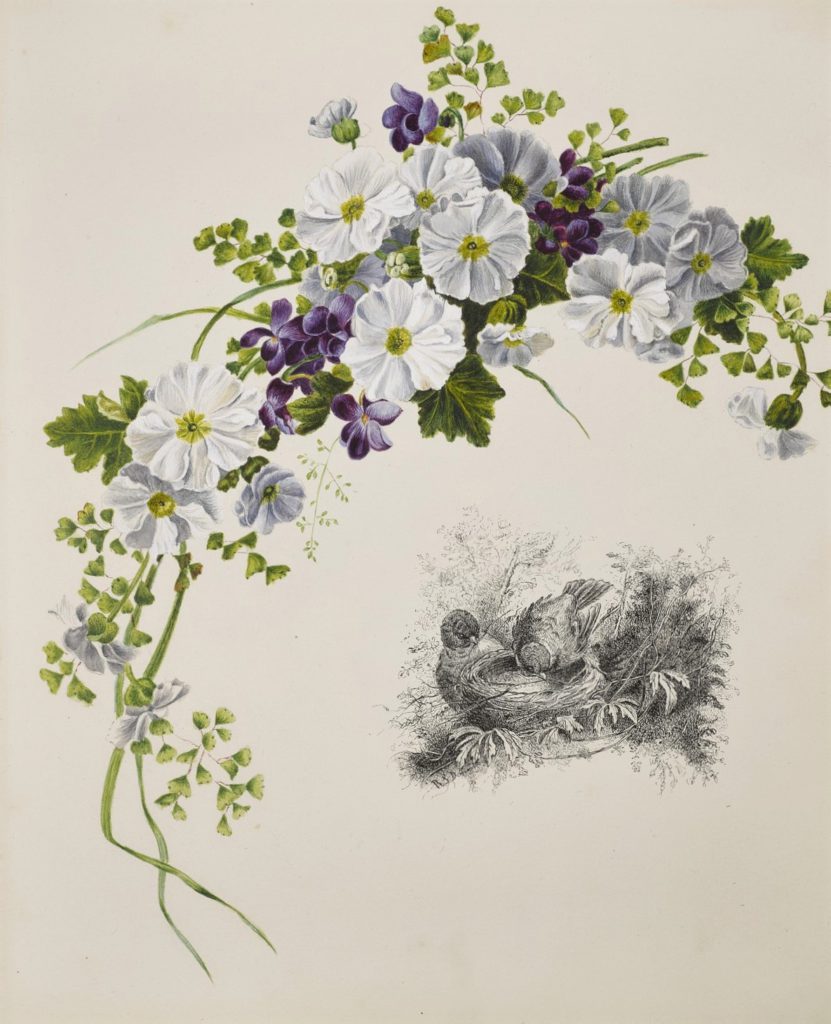
Two students discussed the way that colour, text and floral motifs are used in her representations of the seasons:
Spring: “I think that the black and white against the colour really creates effect. It separates the picture and the border. I also like the way the ribbon looks 3D and displays the word “SPRING.” The flowers relate to the season Spring. It is quite hard to see the signature at first but it goes with the theme. I would make the clovers four leaved to show that it is a special piece. I would also get rid of the robin/ swallow and make clear what it is.”
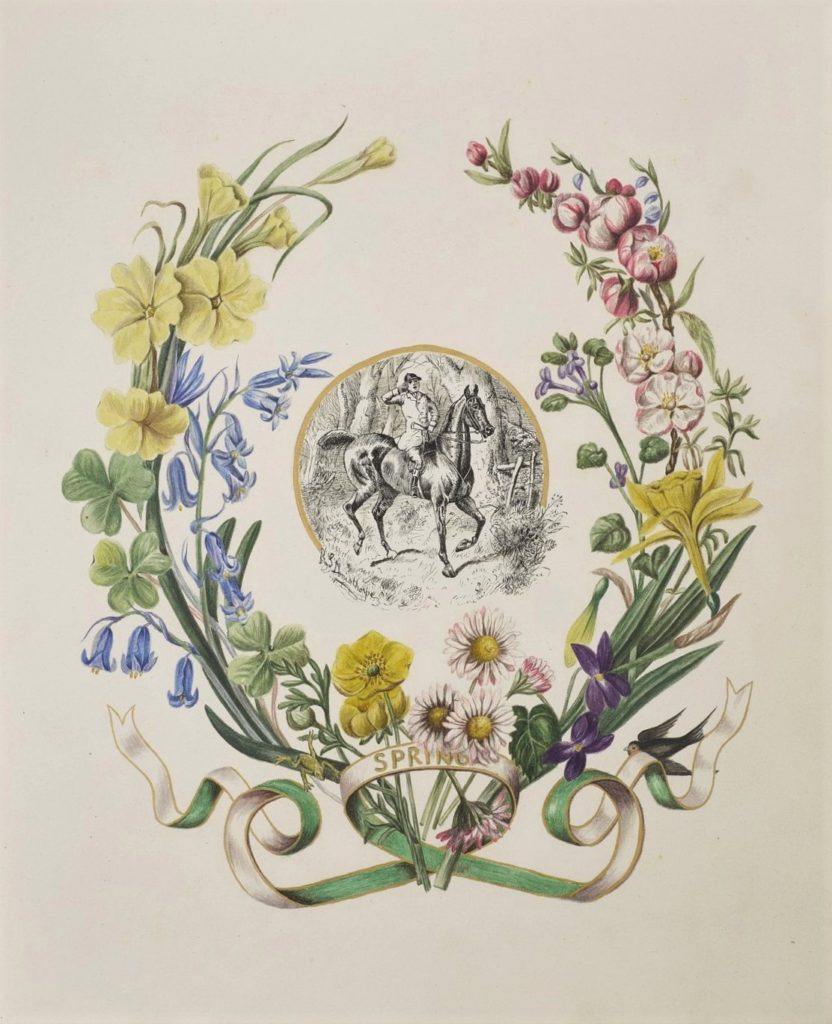
Winter: “The image shows a ring of flowers and plants around an image of two men horse-riding. The ring of flowers are coloured beautifully by hand. However, the image at the centre is in black and white. I think that this is a good balance as too much colour would be too bright however less colour would be dull and draining. Most of the flowers in the picture are also wilting showing that now the winter is here, life is slowly draining.”
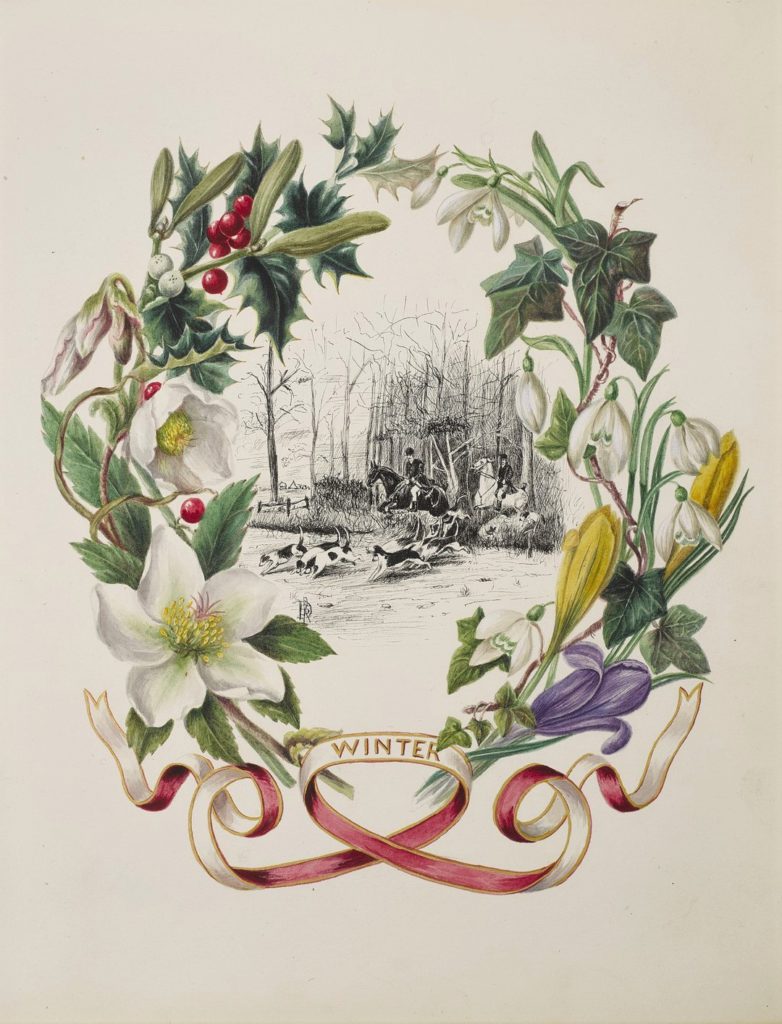
The album combines studies from the natural world with mythological and imaginative motifs including a watercolour of cherubs or putti. These angelic often winged children can be associated with mythological figures like Cupid but also featured in religious art, notably Italian Renaissance and Baroque painting and sculpture. Here, students discuss this page and link it to the themes of the rest of the album:
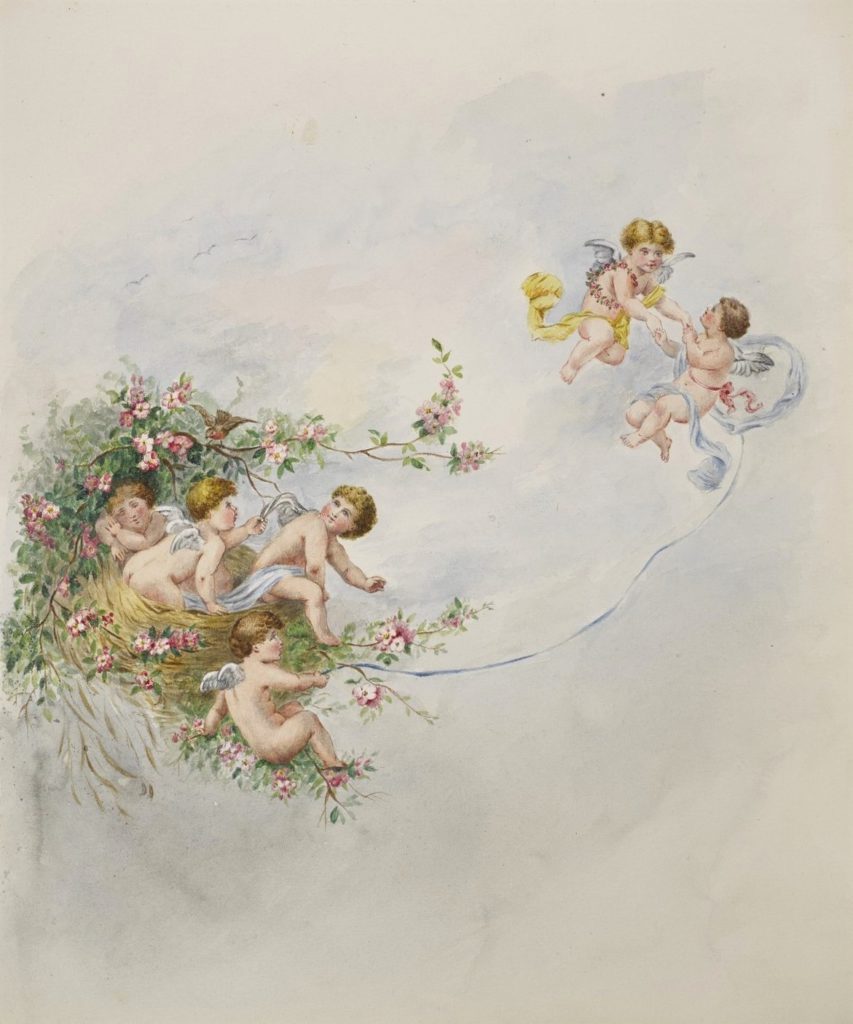
“In this sketch of Cupid, they have used vibrant colours. This gives the impression that it can be seen as a happy scene. The flowers […] indicate the plate can be set in Spring or Summer. It also represents as new life. This can be shown when babies are born, they are now human beings and in Spring new flowers bloom and new animals are born.”
“In this painting of cherubs, they are shown to be playing. The artist has used bright colours [.]. and this shows that it is a joyful scene. They are surrounded by newly bloomed flowers which shows that it is Spring.”
The Donisthorpe Album is one of the clues we have about the life of woman who we know little about today. Many nineteenth-century women became highly adept amateurs in watercolour and printmaking while others were employed in craft industries. Sabina Donisthorpe’s evident fascination with nature and desire to create a beautiful book also resonates with the practice of the contemporary author, illustrator and artist Eleanor Vere Boyle (1825-1916). However, the album appears to be a labour of love produced by a mother for her child and, therefore, a personal and emotional work. The considerable time and resources invested in it suggests Sabina had some money and leisure. One unfinished page raised some interesting questions about her life as this student notes:
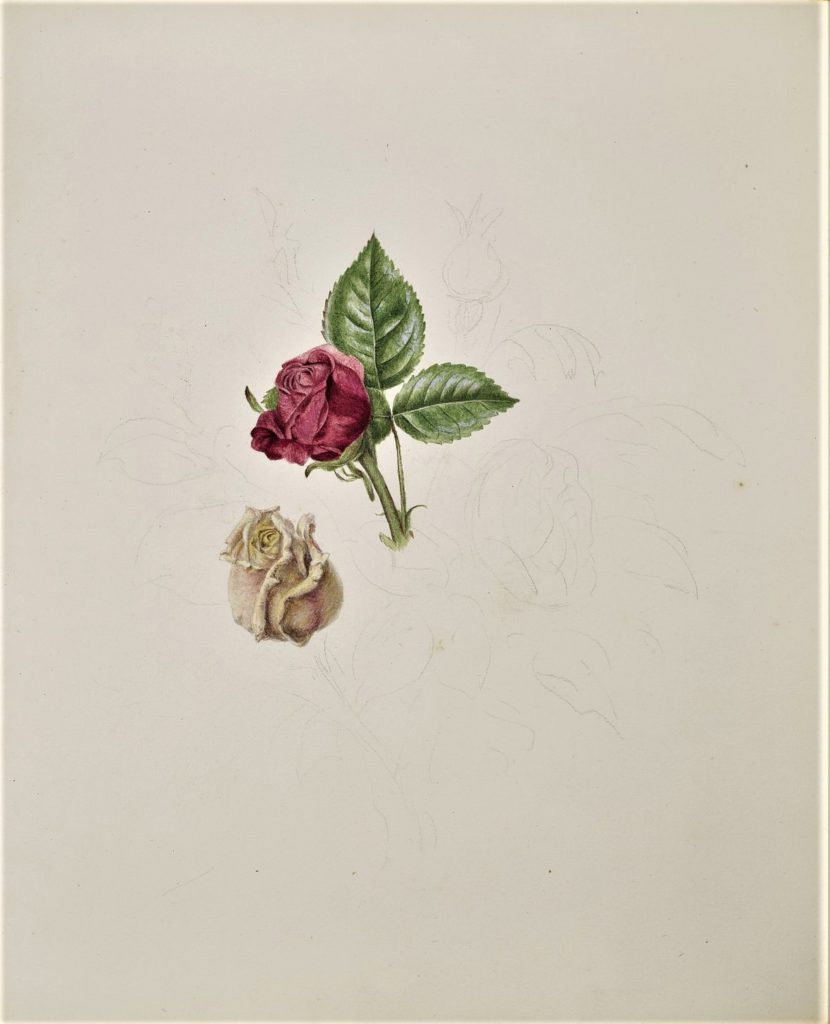
[She] “most likely spent so long on this art book so why didn’t she finish it?
There is a sketch for a picture and she started colouring but didn’t finish.
The sketch shows that this was going to be a bush[–] of roses red and white but the book was created and she did not finish.
Did she die and the son made the book to remember her?
Did her son die so she gave up?
Is her son an artist and she wanted him to finish the art?”
These fascinating questions show developing research skills. The student has noticed a curious aspect of the album used it as a starting point to enquire deeply about the meanings of the page and the lives of those involved in the making of this book. This student’s comments also show the important connections between critical and creative writing. Just as we may use historical sources or works of art to inspire creative work, research requires the creative dimension of asking new questions and seeking to uncover and tell the stories present in the archive.
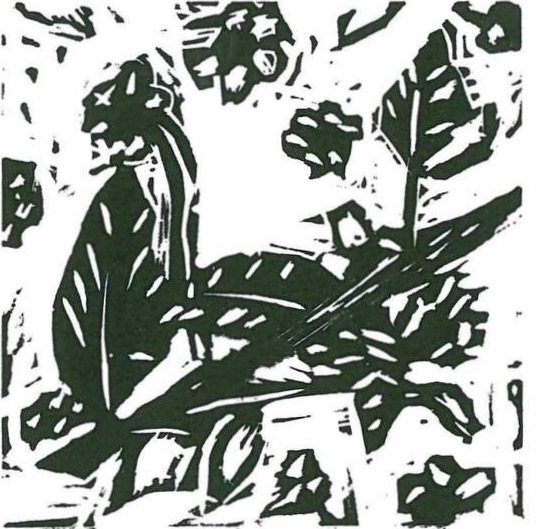
The Donisthorpe Album also offered creative cues. Many of the students responded to the relationship between the floral motif and the blank page which is explored throughout. In this beautiful linocut print the student has worked hard to remove much of the background of the block leaving a strong floral design against the brightness of the paper below. Such a design is effective in monochrome but could also be printed over collage or decorative paper using the technique known as chine collé.
Student contributors: Alicia, Alisha, Cerys, Gordon, Jake, Lillian, Lucie-Lee, Nianna, Reuben, Robert, Rose, Sam, Sonny, Tamia, Thai.